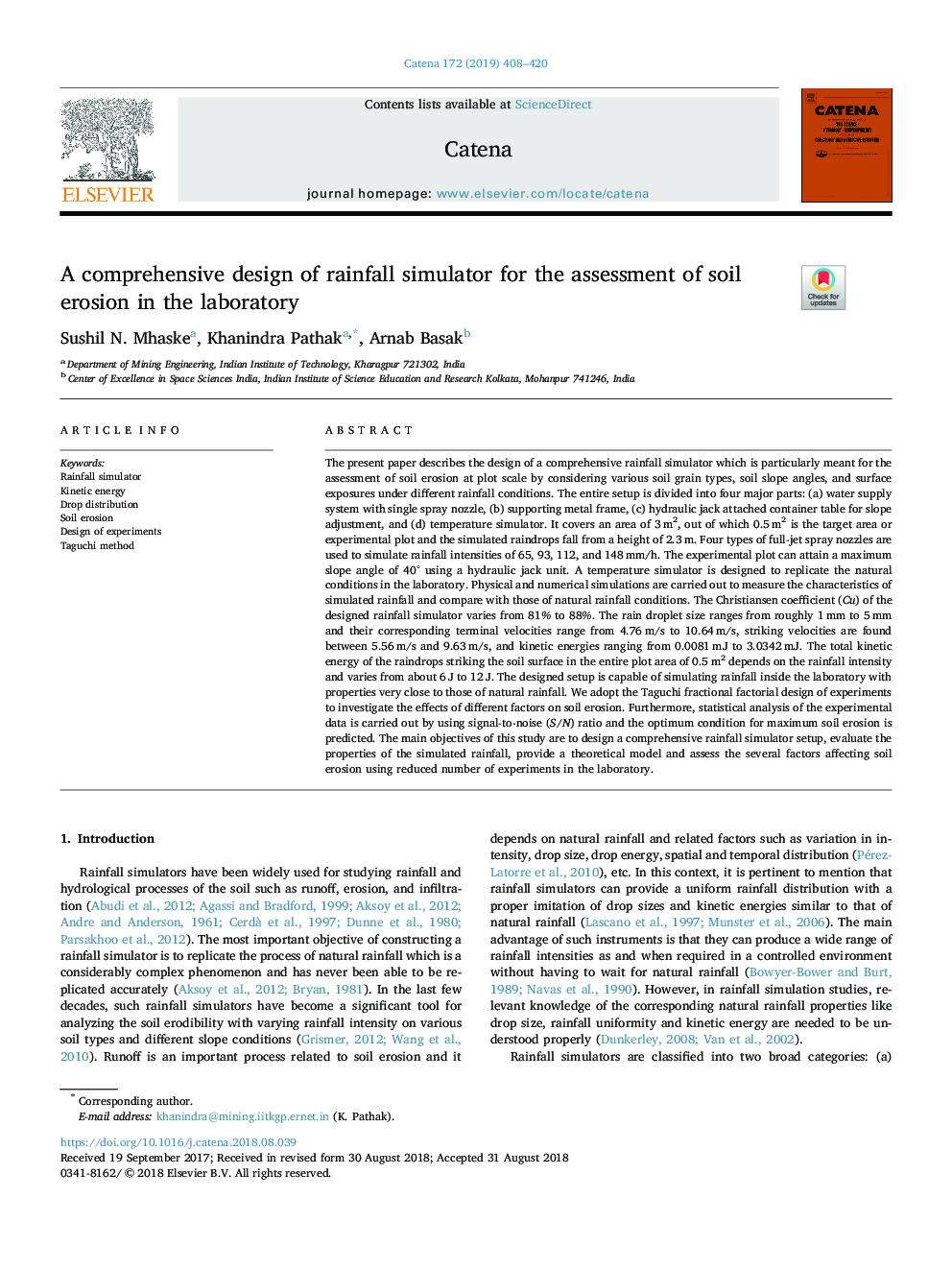| کد مقاله | کد نشریه | سال انتشار | مقاله انگلیسی | نسخه تمام متن |
|---|---|---|---|---|
| 10118196 | 1629182 | 2019 | 13 صفحه PDF | دانلود رایگان |
عنوان انگلیسی مقاله ISI
A comprehensive design of rainfall simulator for the assessment of soil erosion in the laboratory
ترجمه فارسی عنوان
طراحی جامع شبیه ساز باران برای ارزیابی فرسایش خاک در آزمایشگاه
دانلود مقاله + سفارش ترجمه
دانلود مقاله ISI انگلیسی
رایگان برای ایرانیان
کلمات کلیدی
شبیه ساز بارندگی، انرژی جنبشی، توزیع قطره، فرسایش خاک، طراحی آزمایش، روش تاگوچی،
موضوعات مرتبط
مهندسی و علوم پایه
علوم زمین و سیارات
فرآیندهای سطح زمین
چکیده انگلیسی
The present paper describes the design of a comprehensive rainfall simulator which is particularly meant for the assessment of soil erosion at plot scale by considering various soil grain types, soil slope angles, and surface exposures under different rainfall conditions. The entire setup is divided into four major parts: (a) water supply system with single spray nozzle, (b) supporting metal frame, (c) hydraulic jack attached container table for slope adjustment, and (d) temperature simulator. It covers an area of 3â¯m2, out of which 0.5â¯m2 is the target area or experimental plot and the simulated raindrops fall from a height of 2.3â¯m. Four types of full-jet spray nozzles are used to simulate rainfall intensities of 65, 93, 112, and 148â¯mm/h. The experimental plot can attain a maximum slope angle of 40° using a hydraulic jack unit. A temperature simulator is designed to replicate the natural conditions in the laboratory. Physical and numerical simulations are carried out to measure the characteristics of simulated rainfall and compare with those of natural rainfall conditions. The Christiansen coefficient (Cu) of the designed rainfall simulator varies from 81% to 88%. The rain droplet size ranges from roughly 1â¯mm to 5â¯mm and their corresponding terminal velocities range from 4.76â¯m/s to 10.64â¯m/s, striking velocities are found between 5.56â¯m/s and 9.63â¯m/s, and kinetic energies ranging from 0.0081â¯mJ to 3.0342â¯mJ. The total kinetic energy of the raindrops striking the soil surface in the entire plot area of 0.5â¯m2 depends on the rainfall intensity and varies from about 6â¯J to 12â¯J. The designed setup is capable of simulating rainfall inside the laboratory with properties very close to those of natural rainfall. We adopt the Taguchi fractional factorial design of experiments to investigate the effects of different factors on soil erosion. Furthermore, statistical analysis of the experimental data is carried out by using signal-to-noise (S/N) ratio and the optimum condition for maximum soil erosion is predicted. The main objectives of this study are to design a comprehensive rainfall simulator setup, evaluate the properties of the simulated rainfall, provide a theoretical model and assess the several factors affecting soil erosion using reduced number of experiments in the laboratory.
ناشر
Database: Elsevier - ScienceDirect (ساینس دایرکت)
Journal: CATENA - Volume 172, January 2019, Pages 408-420
Journal: CATENA - Volume 172, January 2019, Pages 408-420
نویسندگان
Sushil N. Mhaske, Khanindra Pathak, Arnab Basak,
